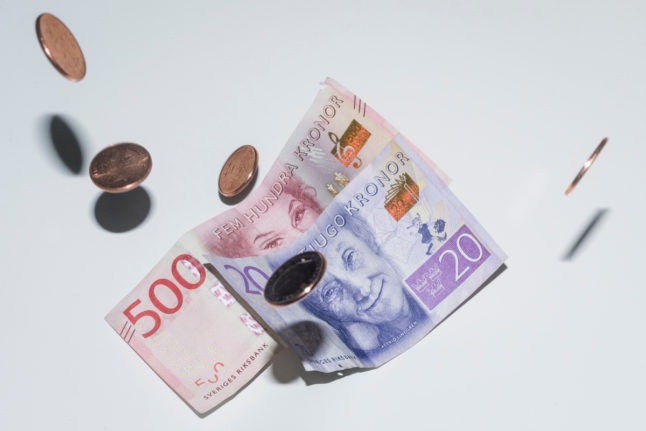Up to 1,000 cars were left stranded for hours on the E22 road between Hörby and Kristianstad in southern Sweden as a blizzard battered the country, with the Armed Forces dispatched to help people evacuate their cars and deliver food and water to those who were still stuck.
Some were stuck in their car for 20 hours or more, reported Swedish media.
Jette and Daniel, two tourists speaking to TT newswire who were on their way through southern Sweden to get the ferry home to Germany, ended up stuck on the E22 for over 20 hours.
“The night was cold but there were people who were worse off,” Jette told TT at 10am on Thursday.
“We got stuck around 1pm yesterday. We can’t do anything about it, we’re just waiting for it to end. Hopefully the car can be dug out soon.”
Police, emergency services and snow ploughs worked through the night to assist stranded drivers, including cutting open the median strip barrier separating the lanes to help ambulances get through. Some people needed assistance with health issues, including diabetes.
On Thursday morning, some cars had been able to leave, but there were still a number of cars and trucks stuck in the snow before noon on Thursday.
“We’ve got most of the cars out now,” Fredrik Malmberg from the Home Guard told TT. “We can’t get the trucks out with our all-terrain vehicles though, they’re too heavy.”
Malmberg, as well as one of his colleagues from the 49th Home Guard Battalion, has been using an all-terrain vehicle to drag cars out of the snow. The battalion have been on site with a total of six vehicles since 8pm on Wednesday evening. He has been in the home guard for ten years.
“I’ve never experienced anything like this. We’ve mainly been excavating cars, but we’ve evacuated a few people,” he told TT.
Police have urged people in Skåne to stay home today and not head out on the roads unless they absolutely have no other choice.
It was previously forecast that the road might be able to open at noon on Thursday, but the Transport Administration is now expecting that the E22 won’t be cleared until 9am on Friday.
A large number of bus lines and trains are cancelled in Skåne on Thursday at noon. Some bus routes were expected to start running again at noon, with trains running again later this afternoon. You can check Skånetrafiken’s website for more information on individual departures.
At least 145 traffic accidents were reported in the southern policing region on Wednesday.
The cold front, which caused temperatures to drop below -40C in northern Sweden, is set to stick around until the weekend, and temperatures below freezing are predicted for the entire country. The mercury is expected to slowly start edging upwards by Saturday.
Are you one of the drivers or passengers stuck in the snow chaos? Please email [email protected] if you have more information.



 Please whitelist us to continue reading.
Please whitelist us to continue reading.
Member comments